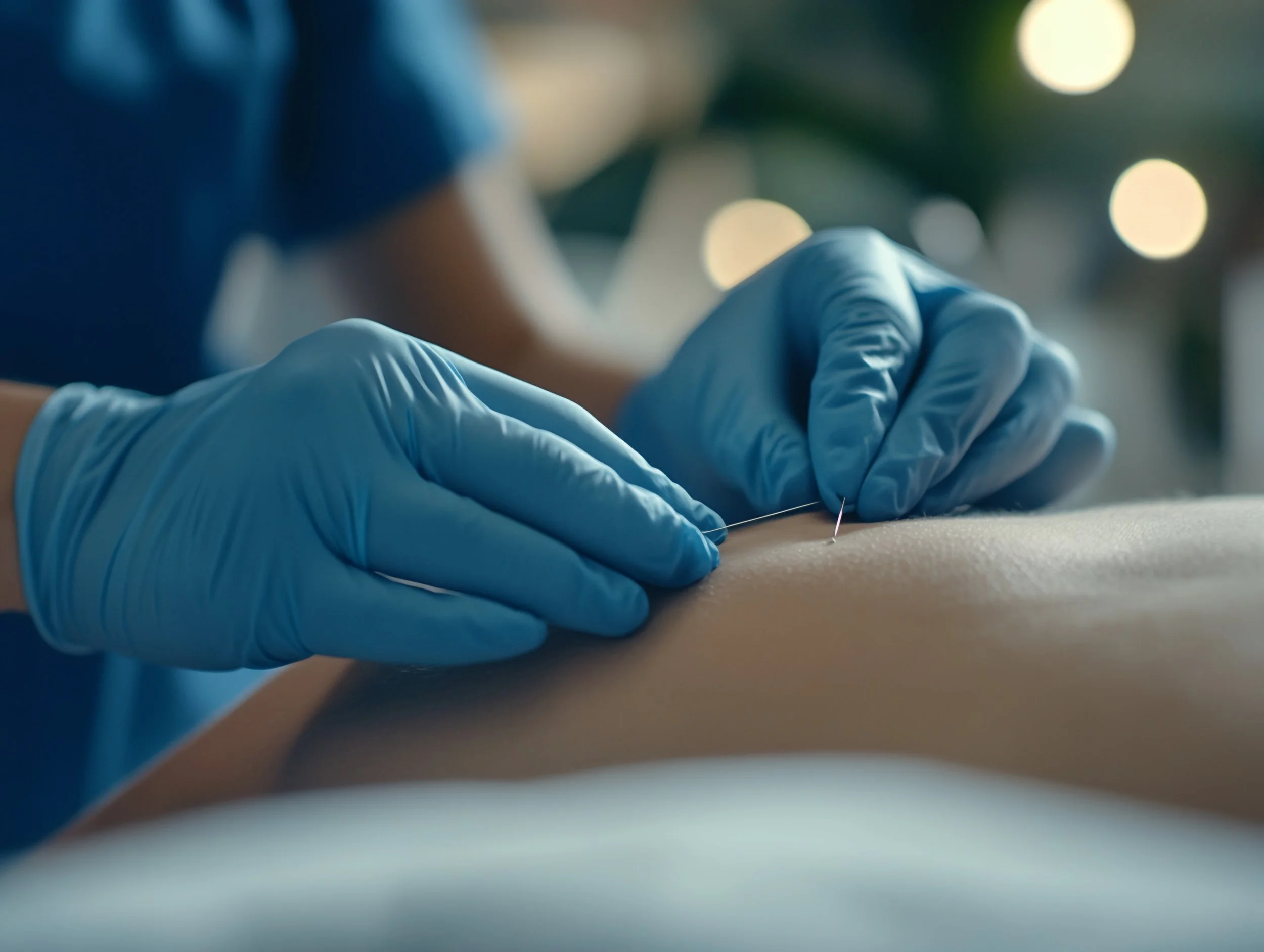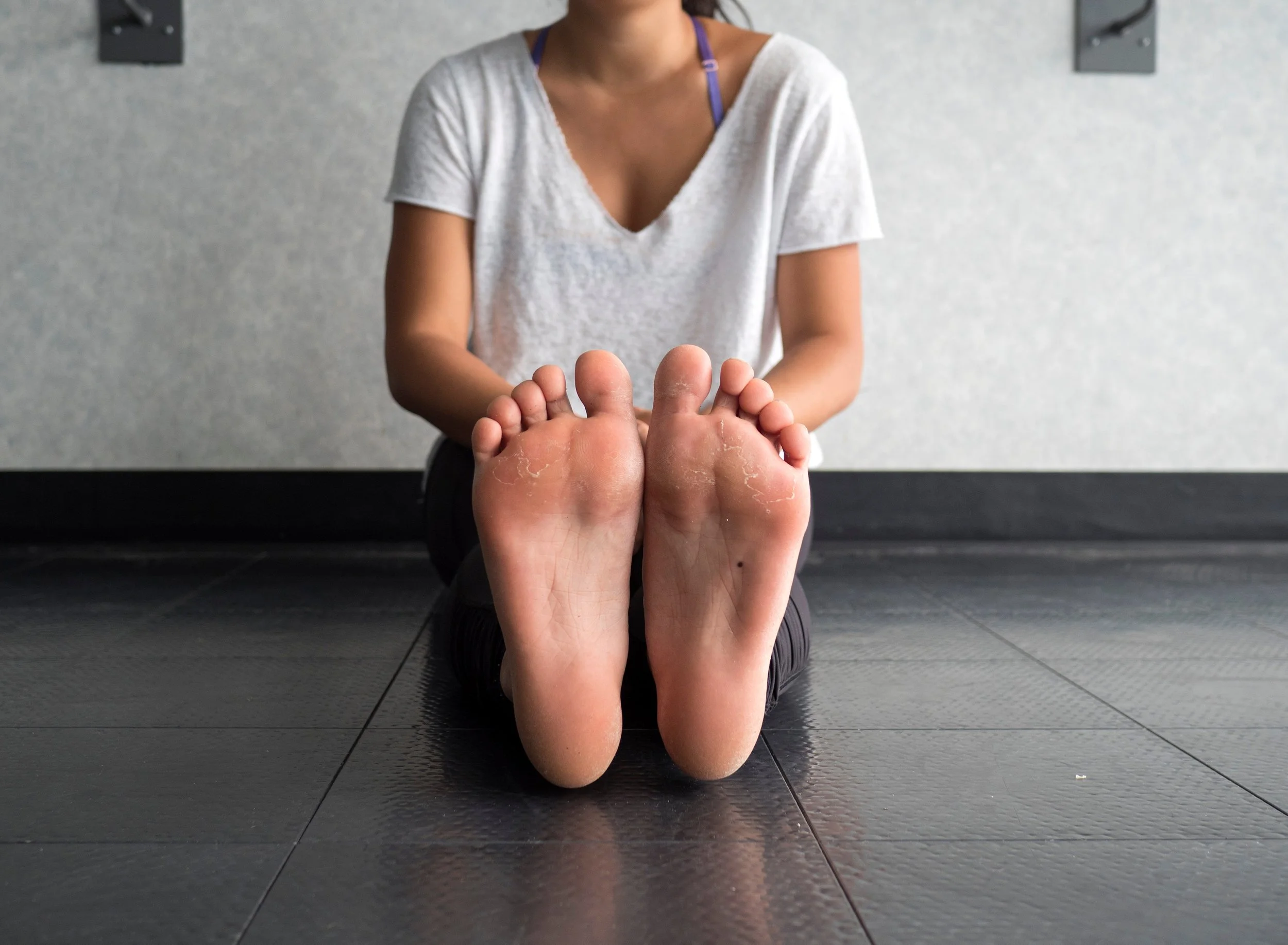““Dry Needling can be an important tool to any rehabilitative process. Whether the treatment is post operative, acute, or chronic conditions.”
”
Dry Needling Science
Understanding the Physiology Behind the Needle
Dry Needling is more than just a physical therapy technique—it is a targeted intervention that interacts directly with the neuromuscular system. Research has shown that it can lead to measurable changes on a muscle, cellular, and neurological level, ultimately helping restore normal function, reduce pain, and promote healing.
1. What Physiologically Happens in the Body During Dry Needling?
When a filament needle penetrates a myofascial trigger point (MTrP)—a hyperirritable area within a taut band of skeletal muscle—it triggers several local and systemic physiological reactions.
Key Mechanisms Include:
Disruption of dysfunctional motor endplates: Inserting the needle mechanically disrupts abnormal acetylcholine release, quieting the excessive electrical activity associated with the MTrP
Eliciting Local Twitch Responses (LTRs): A rapid contraction of muscle fibers in response to needle insertion helps release the taut band and improves circulation in the affected area
Micro-trauma induction: The needle causes minor, localized tissue injury, which signals the body to initiate a repair cascade.
Activation of afferent nerve fibers: Needling stimulates Aδ and C fibers, which in turn modulate central pain pathways via the spinal cord and brainstemTrigger_Point_Dry_Needl….
Vasodilation and improved blood flow: Triggering neurogenic inflammation can increase local perfusion, flushing out biochemical waste and delivering nutrients.
2. Why Do Muscles Respond to Dry Needling?
Muscles affected by chronic overload, poor biomechanics, or neuromuscular dysfunction often harbor latent or active trigger points. These areas are in a persistent contractile state and show abnormal motor endplate activity (i.e., spontaneous electrical discharges).
Dry Needling Affects Muscle Tissue Through:
Restoring neuromuscular communication: Needle insertion into an MTrP can desensitize sensory nerves and recalibrate motor input/output signaling.
Interrupting the pain-spasm cycle: By reducing pain and breaking feedback loops, muscles are less likely to remain in a shortened, guarded state.
Triggering spinal cord reflexes: Local twitch responses are believed to be spinally mediated and may reset aberrant reflex arcs contributing to myofascial dysfunction
3. How Does Dry Needling Accelerate Healing at the Cellular Level?
One of the most compelling aspects of dry needling is its cellular impact on the musculoskeletal system. When a needle is inserted into soft tissue, it acts as a mechanical signal that the body translates into biochemical activity.
Cellular-Level Effects Include:
Activation of Satellite Cells
These are precursor cells involved in muscle repair. When damaged fibers are disrupted by needling, satellite cells proliferate, migrate, and differentiate to repair or replace the injured myofibersConnective Tissue Remodeling
Studies show that needle manipulation causes collagen fibers to wrap around the needle, mechanically stimulating fibroblasts. This leads to:Structural changes in connective tissue
Modified gene expression
Altered extracellular matrix composition
Modulation of Neurotransmitters and Inflammatory Mediators
Needle stimulation leads to release of:Endogenous opioids (e.g., enkephalins)
Serotonin and norepinephrine
Acetylcholine (modulated at neuromuscular junctions)
Normalization of Endplate Noise
Abnormal spontaneous electrical activity in affected muscle areas is reduced post-needling, which decreases involuntary muscle firingImproved Mitochondrial Function
Through enhanced oxygen delivery and reduced metabolic waste buildup, tissues exhibit more efficient energy metabolism and recovery potential.
4. Why Is Dry Needling So Effective?
The effectiveness of dry needling is multifactorial, relying on both biomechanical and neurophysiological responses:
Mechanisms Supporting Its Effectiveness:
Precision targeting of trigger points: Accurate needle placement into taut bands leads to immediate change in tissue tone and pain patterns.
Activation of the Descending Pain Inhibitory System: This central mechanism involves the hypothalamus and periaqueductal gray, modulating pain perception by releasing natural opioids and neuromodulators
Peripheral and Central Desensitization: Reducing local nociceptor input helps prevent spinal sensitization and cortical pain processing associated with chronic pain
Improved Biomechanics: As trigger points are inactivated, patients experience:
Increased joint mobility
Improved muscle recruitment patterns
More normalized posture and movement
Clinical Outcomes Frequently Observed:
Decreased pain intensity
Increased pressure pain thresholds
Greater functional range of motion
Faster return to activity in orthopedic and sports patients
Is Dry Needling Right for You?
Dry Needling is not for everyone, but it can be a powerful tool in restoring pain-free movement. If you're unsure, our team is happy to consult with you and determine whether this treatment aligns with your condition and overall care plan.
If you’re struggling with muscle tension, limited mobility, or lingering pain, dry needling may help accelerate your recovery. We’re happy to discuss your goals and determine whether this treatment fits your plan of care.
👉 Schedule a consultation today or speak with your therapist at your next visit.
Dry Needling Trained Therapists
Liam Main
PT, DPT, OCS, cDN
Victor Kollar
PT, DPT, CSCS, cDN
Amanda Ford
PT, DPT, FDNS
Risks and Safety Considerations
Dry Needling is considered safe when performed by trained professionals. However, as with any medical procedure, there are potential risks:
Pneumothorax (lung puncture) – Very rare but serious; typically occurs only if needling near the chest or upper back.
Bruising or bleeding – Minor and temporary.
Infection – Extremely rare due to use of sterile equipment and techniques.
Nerve or tissue irritation – Rare and typically temporary.
Allergic reactions – Occasionally, patients may react to nickel in needles, please inform your PT of any alergies.
Please Inform Your Therapist If You:
Are pregnant
Take blood thinners
Have a pacemaker or electrical implants
Have a compromised immune system or metal allergies
Have a history of fainting or seizures
References
Dommerholt, J., Fernández-de-Las-Peñas, C. (2013). Trigger Point Dry Needling: An Evidence and Clinical-Based Approach. Churchill Livingstone.
American Physical Therapy Association (APTA). (n.d.). Dry Needling in Physical Therapy Practice.
Retrieved from https://www.apta.orgDunning, J., Butts, R., Mourad, F., Young, I., Flannagan, S., Perreault, T. (2014). Dry needling: a literature review with implications for clinical practice guidelines. Physical Therapy Reviews, 19(4), 252–265.
https://doi.org/10.1179/1743288X14Y.0000000111Kietrys, D. M., Palombaro, K. M., Azzaretto, E., Hubler, R., Schaller, B., Schlussel, J. M., Tucker, M. (2013). Effectiveness of Dry Needling for Upper-Quarter Myofascial Pain: A Systematic Review and Meta-analysis. Journal of Orthopaedic & Sports Physical Therapy, 43(9), 620–634.
https://doi.org/10.2519/jospt.2013.4668Simons DG, Travell JG, Simons LS. Myofascial Pain and Dysfunction: The Trigger Point Manual.
Langevin HM et al. Mechanical signaling through connective tissue: a mechanism for the therapeutic effect of acupuncture. FASEB J. 2001;15:2275–2282.
Hong C-Z. Lidocaine injection versus dry needling to myofascial trigger point. Am J Phys Med Rehabil. 1994;73:256-263
Gunn CC. The Gunn Approach to the Treatment of Chronic Pain. Churchill Livingstone.
Trigger Point Dry Needling. Journal of Manual & Manipulative Therapy. 2006. [PDF Reference]










